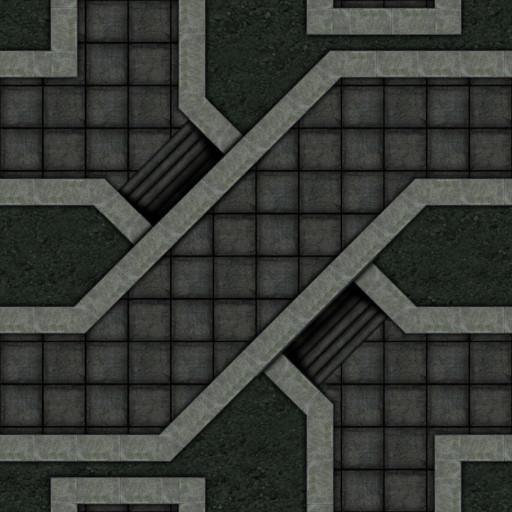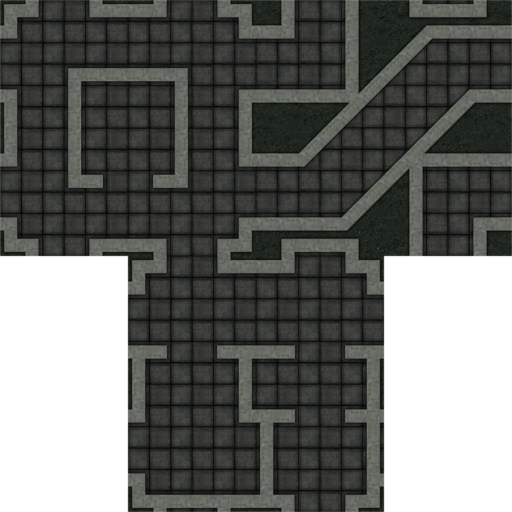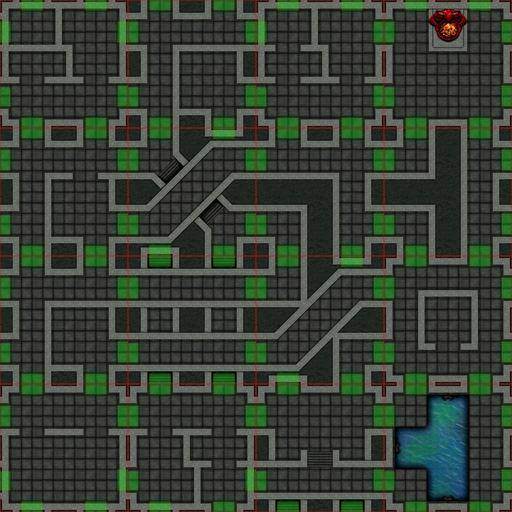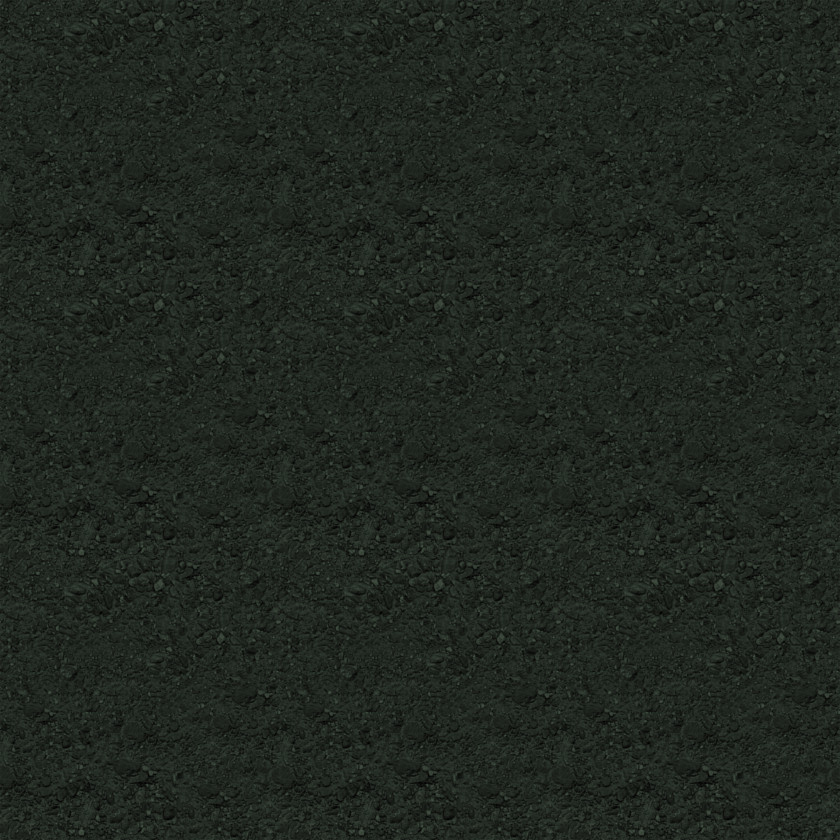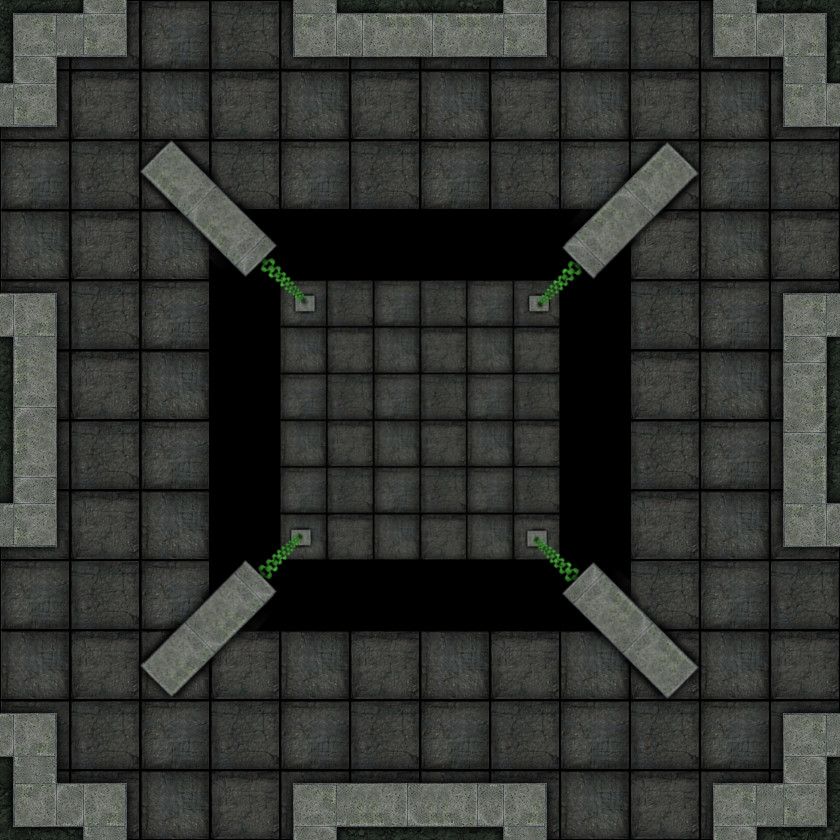Difference between revisions of "Geomorphic Map Tiles"
From Roll20 Wiki
Stephen S. (Talk | contribs) (→Introduction Geomorphic Map Tiles) |
Andreas J. (Talk | contribs) m |
||
| (6 intermediate revisions by 2 users not shown) | |||
| Line 1: | Line 1: | ||
| − | ==Introduction Geomorphic Map Tiles== | + | {{revdate}} |
| − | + | ==Introduction to Geomorphic Map Tiles== | |
<p>Fast and flexible, geomorphic map tiles are a design technique that defines and locates set features on the edge of the tile so any tile can connect to any other tile without concern for orientation. Background and more information on the topic can be found in the article [http://en.wikipedia.org/wiki/Dungeon_Geomorphs "Dungeon Geomorphs," on Wikipedia.]</p> | <p>Fast and flexible, geomorphic map tiles are a design technique that defines and locates set features on the edge of the tile so any tile can connect to any other tile without concern for orientation. Background and more information on the topic can be found in the article [http://en.wikipedia.org/wiki/Dungeon_Geomorphs "Dungeon Geomorphs," on Wikipedia.]</p> | ||
<p>A geomorphic map tile can be set up any number of ways, however for a standard square grid map, a 12 units by 12 units square tile is the norm. The tile below, at full size would be 840px by 840px, 12 by 12 standard Roll20 70px grid units.</p> | <p>A geomorphic map tile can be set up any number of ways, however for a standard square grid map, a 12 units by 12 units square tile is the norm. The tile below, at full size would be 840px by 840px, 12 by 12 standard Roll20 70px grid units.</p> | ||
[[file: Sample_Geomorphic_Map_Tile.jpeg]] | [[file: Sample_Geomorphic_Map_Tile.jpeg]] | ||
<p>Each side has two points of connection (even if the path is closed off) and the features of the map tile may or may not have "3D" areas to allow sides to cross each other in a number of ways. </p> | <p>Each side has two points of connection (even if the path is closed off) and the features of the map tile may or may not have "3D" areas to allow sides to cross each other in a number of ways. </p> | ||
| − | <p>These connection points (some can be closed off solid or be open unknown to the players by way of secret doors) allow the tiles to connect side by side and for many sets the tiles will also connect "off center" (which is why 12 units square is so common for Geomorphic Map Tiles.</p> | + | <p>These connection points (some can be closed off solid or be open unknown to the players by way of secret doors) allow the tiles to connect side by side and for many sets the tiles will also connect "off center" (which is why 12 units square is so common for Geomorphic Map Tiles (half sized tiles and quarter sized tiles are used to fill in the gaps.</p> |
[[file: Sample_Geomorphic_Map_Tile_Connection.png]] | [[file: Sample_Geomorphic_Map_Tile_Connection.png]] | ||
<p>This allows the GM to quickly create a map, with just a few tiles in very little time, while still having a lot of diversity in the number of maps that can be created. The map below is fairly massive (48 units by 48 units) and yet it is only made up of 16 tiles.</p> | <p>This allows the GM to quickly create a map, with just a few tiles in very little time, while still having a lot of diversity in the number of maps that can be created. The map below is fairly massive (48 units by 48 units) and yet it is only made up of 16 tiles.</p> | ||
| Line 11: | Line 11: | ||
<p>The tiles and their connections are clearly seen when highlighted.</p> | <p>The tiles and their connections are clearly seen when highlighted.</p> | ||
[[file: Sample_Geomorphic_Map_Tile_Connection_HL.jpeg]] | [[file: Sample_Geomorphic_Map_Tile_Connection_HL.jpeg]] | ||
| − | <p>The samples above are from the [https://marketplace.roll20.net/browse/set/252/old-school-geomorphic Old School Geomorphic] tiles pack and are arbitrarily referred to as "Type_A" so if other content creators create tiles we will know which set are designed to work with other sets. The only features that would be critical would be the "off map" areas and the "shadow drop"s for the walls. You can get the "off map" texture and "shadow drop" sample to make it easier to create your own content below: | + | <p>The samples above are from the [https://marketplace.roll20.net/browse/set/252/old-school-geomorphic Old School Geomorphic] tiles pack and are arbitrarily referred to as "Type_A" so if other content creators create tiles we will know which set are designed to work with other sets. The only features that would be critical would be the "off map" areas and the "shadow drop"s for the walls. You can get the "off map" texture and "shadow drop" sample to make it easier to create your own content and is one sample tile below: |
| − | + | <gallery> | |
| − | + | Geo_Type_A_Shadows_Example.png|Geo_Type_A_Shadow | |
| − | + | Geo_Type_A_Off_Map.jpeg|Geo_Type_A_Off_Map | |
| + | Geo_Type_A_0045.jpeg|Geo_Type_A_0045 | ||
| + | </gallery></p> | ||
<p>Other inspiration can be found here:[http://davesmapper.com/ Dave's Mapper]</p> | <p>Other inspiration can be found here:[http://davesmapper.com/ Dave's Mapper]</p> | ||
| + | |||
| + | == See Also == | ||
| + | * [[Isometric Maps in Roll20]] | ||
| + | * [[Useful links for mapping]] | ||
| + | * [[Game Resources]] | ||
| + | <br /> | ||
| + | <br /> | ||
[[Category:Tips]] | [[Category:Tips]] | ||
| + | [[Category:Maps]] | ||
Latest revision as of 14:13, 23 October 2021
Page Updated: 2021-10-23 |
[edit] Introduction to Geomorphic Map Tiles
Fast and flexible, geomorphic map tiles are a design technique that defines and locates set features on the edge of the tile so any tile can connect to any other tile without concern for orientation. Background and more information on the topic can be found in the article "Dungeon Geomorphs," on Wikipedia.
A geomorphic map tile can be set up any number of ways, however for a standard square grid map, a 12 units by 12 units square tile is the norm. The tile below, at full size would be 840px by 840px, 12 by 12 standard Roll20 70px grid units.
Each side has two points of connection (even if the path is closed off) and the features of the map tile may or may not have "3D" areas to allow sides to cross each other in a number of ways.
These connection points (some can be closed off solid or be open unknown to the players by way of secret doors) allow the tiles to connect side by side and for many sets the tiles will also connect "off center" (which is why 12 units square is so common for Geomorphic Map Tiles (half sized tiles and quarter sized tiles are used to fill in the gaps.
This allows the GM to quickly create a map, with just a few tiles in very little time, while still having a lot of diversity in the number of maps that can be created. The map below is fairly massive (48 units by 48 units) and yet it is only made up of 16 tiles.
The tiles and their connections are clearly seen when highlighted.
The samples above are from the Old School Geomorphic tiles pack and are arbitrarily referred to as "Type_A" so if other content creators create tiles we will know which set are designed to work with other sets. The only features that would be critical would be the "off map" areas and the "shadow drop"s for the walls. You can get the "off map" texture and "shadow drop" sample to make it easier to create your own content and is one sample tile below:
Other inspiration can be found here:Dave's Mapper
[edit] See Also





